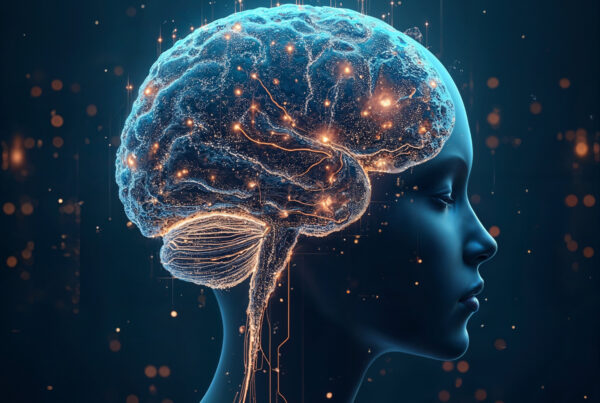In the groundbreaking study Ketamine triggers a switch in excitatory neuronal activity across neocortex (Cichon et al., 2022), researchers uncovered how ketamine—a drug often used in anesthesia and increasingly explored for psychiatric applications—alters the fundamental way neurons in the brain communicate. This discovery not only sheds light on the mysterious dissociative state induced by ketamine but also deepens our understanding of consciousness, perception, and treatment-resistant mental health conditions.
The research, conducted in mice, demonstrated that ketamine fundamentally reorganizes neural circuits across the neocortex. Rather than simply dampening overall activity or boosting it globally, ketamine selectively suppresses some previously active neurons while reactivating others that were previously silent. This striking shift, observed across all cortical layers and multiple brain regions, reveals a dual-network model that may help explain the dissociative yet vividly conscious experiences often reported during ketamine use.
What Is the Dissociative State?
 Dissociation refers to a state in which a person feels disconnected from their external surroundings while retaining internal awareness or vivid mental experiences. It can occur in psychiatric conditions like PTSD or schizophrenia, but also under the influence of substances like psychedelics and anesthetics. While dissociation is often described subjectively, this study provides rare insights into the precise neuronal mechanisms that may underlie it.
Dissociation refers to a state in which a person feels disconnected from their external surroundings while retaining internal awareness or vivid mental experiences. It can occur in psychiatric conditions like PTSD or schizophrenia, but also under the influence of substances like psychedelics and anesthetics. While dissociation is often described subjectively, this study provides rare insights into the precise neuronal mechanisms that may underlie it.
Ketamine is known to induce such dissociative states, yet the biological basis of this effect has remained elusive. Cichon and colleagues aimed to identify exactly how ketamine produces this effect at the level of individual neurons and circuits.
A Dynamic Switch in Neuronal Activity
Using advanced calcium imaging techniques in awake mice, researchers tracked activity patterns across the neocortex before and after administering ketamine. The results were striking:
- Active neurons were silenced by ketamine
- Previously silent neurons became spontaneously active
This switching wasn’t isolated to one brain area. It occurred across:
- Multiple cortical layers
- Various functional brain regions
- Both systemic and localized (cortical) ketamine applications
This suggests ketamine doesn’t just mute or excite the brain—it restructures activity, activating a separate network of neurons not typically engaged during normal wakefulness.
Mechanisms: Interneurons and Channel Inhibition
To uncover what drives this reorganization, researchers zeroed in on specific types of brain cells and molecular targets:
- Parvalbumin (PV) and somatostatin (SST) interneurons were both found to be suppressed by ketamine. These inhibitory neurons typically keep excitatory neurons in check.
- Ketamine also inhibited NMDA receptors, known for their role in synaptic plasticity and excitatory neurotransmission.
- Additionally, HCN (hyperpolarization-activated cyclic nucleotide-gated) channels, which regulate rhythmic brain activity and excitability, were suppressed.
The suppression of these elements allowed previously quiet excitatory neurons to become active, creating a new circuit configuration and likely underpinning the altered perceptual state.
A Tale of Two Neuronal Populations
One of the most intriguing findings of the study is the identification of two largely non-overlapping populations of neurons:
- Wakefulness Network: These neurons are active under normal conditions and help maintain awareness of the external environment.
- Ketamine-Induced Network: These neurons remain dormant during wakefulness but become active under ketamine.
This dual-network hypothesis could help explain why individuals under ketamine anesthesia or therapy report a profound sense of inner experience while appearing disconnected from the outside world. It suggests the brain may shift between two distinct perceptual modes depending on which network is dominant.
Implications for Psychiatry and Neuroscience
 This discovery has broad implications for understanding and potentially treating mental health disorders, especially those involving dysregulated perception or dissociation:
This discovery has broad implications for understanding and potentially treating mental health disorders, especially those involving dysregulated perception or dissociation:
- Depression and PTSD: Ketamine’s ability to rapidly reorganize cortical networks may be a mechanism for its fast-acting antidepressant effects.
- Schizophrenia and dissociative disorders: These conditions often involve abnormal interneuron function and altered sensory processing, similar to what ketamine induces.
- Consciousness research: Understanding how different cortical networks create distinct internal states could revolutionize our understanding of awareness and perception.
Limitations and Future Directions
While the study provides significant insights, it is important to note that the findings are based on animal models. Further research is needed to:
- Confirm these mechanisms in human brains using non-invasive imaging and computational modeling
- Understand the long-term effects of repeated ketamine-induced network switching
- Explore how this mechanism interacts with psychological therapies or other medications
Nevertheless, this research represents a foundational advance in unraveling the neurobiological roots of dissociation and altered states of consciousness.
Conclusion
The study Ketamine triggers a switch in excitatory neuronal activity across neocortex reveals a fundamental reorganization of brain activity under the influence of ketamine. By silencing neurons typically active during wakefulness and awakening previously silent ones, ketamine creates a distinct cortical state. This finding opens a new frontier in neuroscience—suggesting that our brain may operate via alternate perceptual modes, with ketamine serving as a key to unlocking and studying them.
Understanding how these networks function may not only demystify dissociative states but also pave the way for innovative therapies in psychiatry, anesthesia, and consciousness science.
References
Cichon J, Wasilczuk AZ, Looger LL, et al. Ketamine triggers a switch in excitatory neuronal activity across neocortex. Nature Neuroscience. 2022. https://doi.org/10.1038/s41593-022-01167-z
References
- Anand A, McClintock SM, et al. Ketamine versus ECT for Nonpsychotic Treatment-Resistant Major Depression. New England Journal of Medicine. 2023;388:2315–2325. DOI: 10.1056/NEJMoa2302399
- Zarate CA, Singh JB, Carlson PJ, et al. A randomized trial of an N-methyl-D-aspartate antagonist in treatment-resistant major depression. Arch Gen Psychiatry. 2006;63(8):856–864.
- Murrough JW, Perez AM, Pillemer S, et al. Rapid and longer-term antidepressant effects of repeated ketamine infusions in treatment-resistant major depression. Biol Psychiatry. 2013;74(4):250–256.
- Wilkinson ST, Farmer C, Ballard ED, et al. Impact of midazolam vs ketamine on suicidal ideation. Am J Psychiatry. 2018;175(4):327–335.
McGirr A, Berlim MT, Bond DJ, et al. A systematic review and meta-analysis of randomized controlled trials of ketamine in the rapid treatment of major depressive episodes. Psychol Med. 2015;45(4):693–704.




